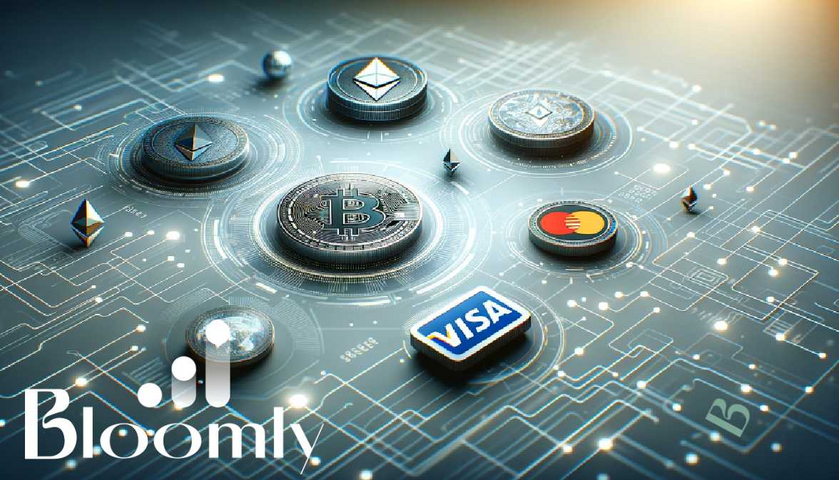In the quest to safeguard their position in the rapidly evolving digital economy, Visa and Mastercard are not merely reacting to trends but are proactively future-proofing their business models. Their initiatives extend beyond the current market dynamics, focusing on ensuring long-term relevance among a burgeoning demographic of digital natives who are increasingly inclined toward digital currency transactions. This strategic foresight is a testament to their commitment to not just participate in the digital finance revolution but to lead it, safeguarding their market share and continuing their dominance in the payment industry.
Visa, for instance, has been at the cutting edge of blockchain technology, adopting a blockchain-agnostic stance to explore and enhance payment systems. Collaborating with USDC stablecoin issuer Circle since 2021 to facilitate cross-border fiat currency payments on the Ethereum blockchain, Visa has embraced the potential of blockchain to streamline and secure financial transactions. This initiative, which has expanded to include the Solana blockchain for its high processing speeds and lower transaction costs, reflects Visa's commitment to reducing friction for end users and adapting to the needs of the digital-first consumer.
Similarly, Mastercard's innovative approach has led to the creation of the Multi-Token Network (MTN), a platform aimed at making transactions within digital asset ecosystems more secure, scalable, and interoperable. This development is part of Mastercard's broader strategy to integrate digital value transactions into their service offerings, providing customers and businesses with greater choice and flexibility in how they move digital value.
Both Visa and Mastercard have recognized the importance of supporting Central Bank Digital Currencies (CBDCs), participating in several pilot projects worldwide to explore and implement these digital currencies safely and seamlessly. Their involvement in CBDC initiatives underscores a strategic move to stay aligned with the future of monetary systems and ensure their platforms are ready to support the next wave of digital financial instruments.
Moreover, their efforts extend to facilitating easier access to digital currencies through partnerships with over 70 crypto platforms to issue cryptocurrency-linked debit and credit cards. This initiative makes it convenient for cardholders to convert their crypto to fiat currency and utilize digital assets for everyday purchases, further blending the lines between traditional and digital finance.
In addition to these technological advancements, Visa and Mastercard are pursuing patents related to blockchain and cryptocurrency, protecting their innovations and signaling their intention to remain at the forefront of digital finance technology. Their commitment to innovation is clear, as they develop secure, efficient, and compliant platforms for digital asset transactions, ensuring they remain attractive and relevant to the digital-native youth and future generations.
By integrating blockchain technology and digital currencies into their ecosystems, Visa and Mastercard are not just future-proofing their business models; they are actively shaping the future of global finance. Their strategic initiatives reflect a deep understanding of the need for innovation to maintain competitiveness in the evolving financial landscape. As they bridge traditional payments with new forms of digital transactions, they are setting new standards for security, efficiency, and compliance, ensuring that they continue to lead the charge in the digital age.




























